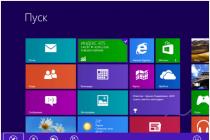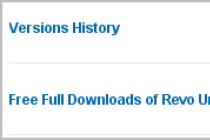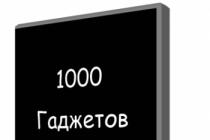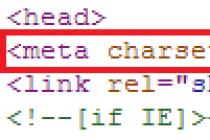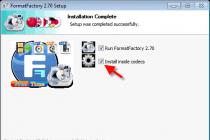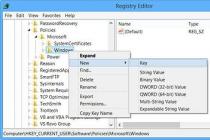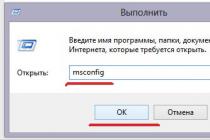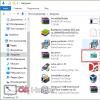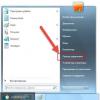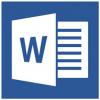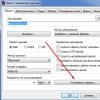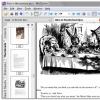Hello.
Whoever says what, but the popularity of optical discs is rapidly falling: not even all computers and laptops have a drive for them. And, probably, this is not surprising: after all, an ordinary flash drive that fits into any pocket can easily replace them.
It is also more convenient to use a USB flash drive to install Windows (there is a USB port on any computer!). But for this it must be written down / prepared correctly.
In this article, I will consider all the typical questions related to creating installation flash drives: programs for this operation, step-by-step settings before recording, the process of creating flash drives with multiple OS (multiboot), UEFI flash drives. But first things first...
Note!
You may find useful an article on how to download an ISO image with Windows 10 OS [officially and legally] -
There are quite a few programs of this kind. To cover them all in one article is a thankless task, and not even necessary. I will give below those programs that I have used (and still use) myself many times when writing my bootable media.
Approx. : how to use this or that program will be discussed in the second part of this article.
Table number 1 (main)
| Program name / site address | Description | Screenshots |
|---|---|---|
| UltraISO
|
One of the best programs for working with ISO-disc images. Allows you to edit them, extract files from them (or add), write images to a USB flash drive / disk, etc. In general, an irreplaceable program for working with the ISO format, and I have repeatedly recommended it in my articles (and in this format, by the way, almost all Windows operating systems are distributed). |
(main window of the program) |
| Rufus
|
A small free utility that can create almost any bootable USB flash drive, memory card, etc. Allows you to prepare including USB flash drives for UEFI. Another advantage of the utility: it works somewhat faster than other counterparts. Note: there is both a portable version (does not need installation) and a classic one. Works in all Windows OS: XP, 7, 8, 10. |
(Rufus settings for writing a bootable flash drive) |
| One of the most famous programs for writing bootable media. Allows you to create bootable media with OS: Windows 2000, XP, 7, 8, 10, etc. The program also allows you to create multiboot flash drives (i.e. on which there are 2-3 or more Windows operating systems and at boot you can choose which one to install). In general, an indispensable software if you have to create installation media from time to time. |
(setting before burning a flash drive) | |
| WintoFlash https://wintoflash.com/ |
Simple and handy program for creating bootable media. In the process of creating and configuring you will be accompanied by a wizard: the whole process goes in steps, which is very convenient if you have never used such programs before. Opportunities:
|
(WintoFlash main window) |
| Windows 7 usb dvd download tool | A simple and convenient utility for writing bootable flash drives from Microsoft itself (therefore it was impossible not to include it in this review). You can write a bootable USB flash drive with the following Windows operating systems: 7, 8, 10. The entire recording process is divided into several steps: choosing a flash drive, choosing an image, confirming, recording ... By the way, there is nothing superfluous in the program: the design is in the style of minimalism. In general, I recommend! Among the shortcomings: it is not always possible to write an ISO image from Windows to a 4 GB flash drive (the program asks for 8, although other similar utilities write this image to the same USB flash drive ...). |
(the first step is choosing an ISO image) |
Helper programs
A small free * program for working with images (supports a huge number of different formats: ISO, MDS / MDF, CCD, etc.). After installing this program, you will have a virtual drive in "my computer" (their number can be increased) in which you can open any of the images. For a computer, it will all look as if you opened a real CD / DVD disc in the drive.
In addition to opening images, you can also create them from various disks. In general, an irreplaceable program on the PC (especially with the development and popularization of disk images).
* Note: in addition to the free version, you can find a paid version on the developer's website (with advanced functionality).
An analogue of Daemon Tools, it has the same functions: creating and opening images, support for protected disks, etc. Alcohol 120% is a paid version of the program, there is a free version - Alcohol 52%.
Basically, you can work with both Daemon Tools and Alcohol. The choice is a matter of taste!
Step-by-step creation of a bootable USB drive
Windows XP
Once one of the most popular operating systems from Microsoft. Now, of course, its popularity is falling, and yet a fairly large number of PCs run on this particular OS. Therefore, I decided to include it in this article ...
WinToFlash
In my opinion, the easiest way to write a bootable USB flash drive with Windows XP is to use the WinToFlash utility. The fact is that a wizard is built into it, which will guide you through all the hardships ... (by the way, the Lite version is enough for work).
After starting the utility, click on the green checkmark (screen below) - " Windows Installer to USB Transfer Wizard".

WintoFlash - Getting Started with the Wizard

The next step: you need to specify the path to the image file with Windows XP and select the USB flash drive to which this image will be written.

Actually, in the next step, the program will warn you that all information will be deleted from the disk and will offer to continue. Agree and wait until all files are copied to the USB flash drive.

To help! I have more detailed instruction for working with WinSetupFromUSB -
This program is somewhat different from the previous one. Firstly, there is no wizard who will guide you through the steps (all settings must be entered by yourself), and secondly, there is no support for the Russian language ...
First, insert the USB stick into the USB port and run WinSetupFromUSB and the administrator name.
- select the inserted USB flash drive;
- click the "Auto format it with FBinst" checkbox, the file system is NTFS;
- specify the path to the folder with the Windows XP distribution kit (the ISO image can be unzipped using the WinRar program, or open it in Daemon Tools (the links to the programs are presented above));
- the final touch - press the "GO" button.

In the next step, the program will warn you that all data on the USB flash drive will be deleted during the process of writing data to it. Just confirm it.

If the flash drive has been successfully registered, you will see the "Job Done" window.

Windows 7, 8, 10
In principle, the same utilities can be used to write these OSes - the whole process is identical. I'll show you the whole process step by step using several utilities as an example.
Windows 7 usb / dvd tool
Despite the fact that this utility is designed for Windows 7, you can use it to write to a USB flash drive with Windows 8/10. Because This program is the simplest (it couldn't be easier) of all and the whole process of recording an image in it consists of only 4 steps, I recommend it first of all.
Step 1: specify an ISO image with Windows OS ("Browse" button, when the image is specified, click "Next").

Specify ISO file
Step 2: select the device to record. In this case, you need to select either a USB device or DVD. We choose the first one.

Step 3: select the letter of the drive to which the recording will be carried out (i.e. indicate the desired flash drive, because several of them can be connected to the PC ...).

Step 4: recording process. When the message about the successful completion of the operation is shown (Bootable USB device created successfully) - you can restart the PC and check the USB flash drive ...

As you can see above, the whole process is extremely simple and not replete with anything superfluous.
UltraISO

Rufus
Update article from 24.01.2019: Added screenshots of version 3.4. Also on my blog there was an instruction for working with Rufus 3.4 -

UEFI flash drive
UEFI is a new standard, a new interface (so to speak). It is intended to replace the "old" BIOS. One of the main tasks of UEFI is to protect your computer from boot viruses that are loaded together (or before) the Windows operating system boots (sorry for the tautology).
Therefore, in new computers / laptops, if you connect a USB flash drive created in the classical way to their USB port, the PC will not see it! In order for this flash drive to become visible: you need to switch UEFI to Legacy (the spelling may differ slightly, depending on the BIOS / UEFI version) and disable Secure Boot.
In the same part of the article, I will consider a couple of ways how you can create a bootable UEFI flash drive (so that you do not have to turn off Secure Boot protection in the BIOS). So...
Method number 1 - using the WinSetupFromUSB utility
First, run the utility as an administrator (how to do it: right-click on the executable file, then select the desired function in the context menu).

- Select the USB flash drive (be careful, all data on the USB flash drive will be deleted during recording!);
- Click the "Auto format it with FBinst" checkbox and select the FAT 32 file system (do not touch the rest of the checkboxes);
- Next, select the ISO image file with Windows OS (in the example below, I chose Windows 8);
- Press the GO button and wait for the process to complete.

Configuring WinSetupFromUSB for writing a UEFI flash drive.
Method number 2 - using the Rufus utility
Rufus is a great utility for burning different types of bootable media. All settings are performed in one window, everything is simple and fast.
You also need to run the utility from the administrator (screenshot below).


Rufus 3.4 - creating a USB flash drive for UEFI (GPT)
Multiboot flash drive (multiple OS on 1 flash drive!)
On a USB flash drive, you can record not only one version of Windows, but several at once! For example, imagine you have an OS on one flash drive: Windows XP 32 bit, Windows 7 64 bit, Windows 8 64 bit and Windows 10 64bit. In which case, you do not need to carry with you a bunch of flash drives with different OS - with one single one, you can immediately install the desired one. Below I will consider in detail how and what is done ...
To create such a USB flash drive, you need the following:
- multiple ISO images with the systems you want (for example, Windows XP and Windows 7). By the way, it is better to take the Windows XP image with integrated SATA drivers, otherwise you will get a "blue" screen during installation on new motherboards;
- Daemon Tools or Alcohol (if you want to add Windows 2000, XP to the USB flash drive): programs that can open an ISO image (ie you will see a virtual drive in "my computer", since this is not an ISO image, but a regular disc inserted into a CD-Rom. Presented in the first part of the article) ;
- 8-16 GB flash drive (the more OS you are going to burn, the more spacious the flash drive should be);
- program (presented at the top of the article).
Step-by-step instructions for creating a multiboot flash drive
- Launching the program WinSetupFromUSB as administrator... To do this, just go to the program folder, select the executable file and right-click on it, then select "Run as administrator" from the context menu.
- Next, in Daemon Tools, open the image with Windows 2000/2003 / XP OS (those who will not write these OS to a USB flash drive can skip this step).

The Windows XP ISO image is open in Daemon Tools.
- Insert the USB flash drive into the USB port;
- Next, you need to set the following parameters: 1)
specify the inserted USB flash drive (in my case, drive "E: \"); 2)
Check the box "Auto Format it with Fbinst", select the NTFS file system (if you plan to create a USB flash drive for UEFI - choose FAT 32); other checkboxes by default; 3)
specify the virtual drive in which the ISO image with Windows XP / 2000 is open; 4)
specify the ISO image with Windows 10 (in my case, this particular OS was chosen for a multiboot flash drive); 5)
press the "GO" button - start recording the flash drive. All numbers are illustrated in the screenshot below.

- Next, the program will ask you whether to start recording exactly. By the way, it is important that all data on the flash drive will be deleted!
- Then the program will ask again - the answer is yes.

Warning 2 - click "Yes".
- Further, if everything went well, at the bottom of the window you will see a "green bar" - the program has started working. The recording time depends on the flash drive, the selected images, the speed of your USB-port, PC boot, etc. On average, 5-20 minutes. to record multiple OS. At this time, it is better not to touch the computer and not run resource-intensive tasks on it: games, video / graphics editors, etc.

- When the flash drive is written, you will see the inscription "Job Done". In principle, the USB flash drive can already be used, it now has 2 Windows XP and 10 operating systems! The screen is below.
- To add another OS, for example, Windows 7 - just insert the USB stick again into the USB port, run WinSetupFromUSB (as administrator). Then: 1)
select the desired flash drive (note: on which we previously recorded 2 OS)
; 2)
specify the ISO image with the added Windows OS; 3)
press the "GO" button. Note: please note that you do not need to check the box next to "Auto format it with FBinst", as we did before!

- When another OS is added, you will see the usual window - the job is done. Now the flash drive has 3 OS: Windows XP (32 bit), 7 and 10 (64 bit).
- If you want to add another OS, for example, Windows 8, you need to do step 9 again (see above). In principle, this way you can add quite a lot of OS to your USB flash drive (so to speak, provide all the options) ...
Checking a multiboot flash drive
To check the created USB flash drive in operation, you need to do the following:
- Go to the BIOS and queue the USB flash drive (you can use the BOOT Menu). In more detail about which buttons for running in Bios and calling the Boot Menu is described here:
- Insert the USB flash drive into the USB port and restart the computer;
- A window should appear as in the screenshot below: for example, I selected the line Windows NT 6 (this is to select the installation of Windows 7, 8, 10).

After that, if you have 2 or more "new" operating systems, you will see a list with all of them. Choose the option you want and continue with the installation. The screen is shown below, the flash drive is working!

On this positive note, I am finishing the article, for the additions, as always, I will be grateful.
Hello dear blog readerswww.site... Today we will return to the topicCreate Bootable USB Flash Drive.
A publication on this topic that described the "manual" method of preparation bootable USB on the command line Windows and using the utility Universal USB Installer, turned out to be incomplete.
The fact is that the methods considered in it are suitable for a very wide range of operating systems, including the latest at the current time. Windows 8.1 but not suitable for Windows XP... The latter will be discussed today.
Immediately I draw your attention to the fact that we will only consider methods of preparation bootable USB drive with Windows XP distribution but not creating a Live CD with this system.
Why Windows XP dropped out of the list and requires a “special” approach? This is explained by the fact that the installation process of this operating system is not implemented in the most optimal way. It consists of two stages, each of which runs in its own operating environment.
At the first stage, devoid of a graphical interface (in fact, it is DOS), the hard disk is prepared, files are copied from the bootable media to it and the boot loader is installed Window XP(ntldr).
On the second, after restarting the computer, the actual installation and configuration of the system takes place. Despite the fact that at this point the files Windows XP are already present on the hard disk, a characteristic feature of this stage is the need to access the distribution files on bootable media.
There are no standard ways to create a bootable USB flash drive with DOS in Windows. However, today we will not need it.
For a long time that exists Windows XP, a large number of different options for recording boot devices with the system distribution were proposed, including quite nontrivial ones. I will still try to contribute to this matter, but in the style of the previous publication, the title of which begins with the words “ The easiest way…”.
Preparing a bootable USB flash drive with Windows XP distribution in YUMI - Multiboot USB Creator
I want to offer you today Easiest Way to Create Bootable USB Flash Drive (bootable USB) with distribution Windows XP using the utility YUMI - Multiboot USB Creator.
I think there is nothing surprising in the fact that the program considered last time Universal USB Installer and the program YUMI, which will be discussed today, are represented by one team “ USB Pen Drive Linux”.
To create a bootable USB drive with Windows XP Must have:
- USB Flash 1 GB (standard image Windows XP takes about 600 MB);
- Distribution disk image Windows XP(file * .iso);
- Utility YUMI, the latest version of which is best downloaded from the project site pendrivelinux.com.
Use the utility YUMI - Multiboot USB Creator not simple, but very simple.

At the first step, choose USB Device, to which the distribution is planned to be recorded.
If the flash drive needs to be formatted, we mark it in the corresponding checkbox on the right.
At the second step, open the drop-down list of operating systems supported by the program and find in it (almost at the very bottom) “ Windows XP Installer ".
At the third step, we specify the path to the file with the Windows XP image. This is probably easiest to do with " Browse«.
Click on “ Create”.

We read the warning. The main thing is not to leave any necessary files on the flash drive - they will be destroyed during formatting. Click “ Yes”.

First, such a window will appear in which you can watch the progress of the process - formatting the device, creating folders and copying files.

After a while, a new system window will open for copying the file with the distribution image. It is this operation that takes most of the time. Accordingly, it depends on the size of the distribution and the speed of the flash drive itself.
Due to the fact that in this case it is the distribution image that is copied to the device, and not the files contained in it, in general, the time to create a bootable USB flash drive using YUMI will be the smallest in comparison with other similar utilities.
If copying is completed successfully, the system window will close and in the command window YUMI a message like this will appear: “ All finished, Process is Complete!”.

At the next step, the program will ask if you need to add another distribution image to the device. It's not a mistake - YUMI knows how to create multiboot devices. The number of different distributions on one USB Flash Drive limited only by its volume. Of course, you don't need to reformat the flash drive in this case.

Utility operation YUMI ends with a message that a new distribution kit can be written to the same USB drive using YUMI later with the preservation of the existing ones.
After exiting the program, you can remove the USB flash drive (after disabling it in the system) and start installing the operating system recorded on it on the computer.
Booting a Computer from the YUMI MultiBoot USB
Install the prepared USB flash drive into the computer on which the installation is planned Windows XP, and load it from it.

After booting the computer from USB Flash prepared in the program YUMI, a screen for selecting one of the distributions recorded on the device will appear. In our case, it is only one, choose “ GRUB Bootable ISOs or Windows XP ->”.

The next screen will present a menu with a choice of steps to install Windows XP. It is necessary to start, of course, from the first - “ Stage 1”.
Directly installation Windows XP SP3 we will discuss next time. You ask - is it really about the installation today Windows XP can I write something new? It turned out that it is not only possible, but also necessary.
In conclusion, a few words about the utility WinSetupFromUSB, the link to which I gave in the comments to the first article. With its help, you can write a bootable USB flash drive no less successfully. Well, maybe a little more difficult in terms of preparing the device itself and a little longer due to the need to work with separate files, and not with an image.
Initially, I planned to make a short description of the algorithm for working with this program, but after a recent reinstallation Windows XP SP3 on the netbook Asus eee-pc 900 decided to limit YUMI... Why, it will become clear from the next article dedicated to the installation. Windows XP SP3.
13 comments
The question is really incorrect. What did you want to ask? Why do we need Windows XP today, or why install it from a USB flash drive?
Now it is clear. The question is absolutely correct - I also think that if there is a possibility of XP not to put it, then it shouldn't be put.
Another thing is that this is not always possible and there are many reasons for this. At home, it can be an old computer, completely serviceable equipment, which, except in this operating system, does not work, similar programs.
The enterprise has an elementary lack of money to change the computer park and purchase new licenses.
As of the end of last year, XP runs 30% of all computers in the world. According to forecasts, after the end of support for XP from Microsoft, about 15% of computers will remain under XP. This is a huge figure.
Therefore, at least XP reinstallation in the event of a problem will be relevant for a relatively long time.Yes, indeed, in some cases, XP is indispensable. For example, I have an old Hewlet scanner with a slide module. The funny thing about the situation is that by itself it works in other systems, but you can use the slide adapter exclusively in XP.
I can assume that the matter may be in the flash drive itself. I have a couple of those on which everything is recorded without problems, but not a single computer wants to boot from them. Likewise - black screen and blinking cursor. I will not undertake to explain the physical meaning of this phenomenon. Features of the controller. Try a flash drive from another manufacturer.
any program for editing partitions to demolish the actual partition on the flash drive and create it anew, I caught this a lot, especially during experiments with different bootloaders on the flash drive
what exactly are you going to "run" when broken hard?
For example, I needed XP for work, although I myself am sitting at 7. It's just that the drive did not work in an old laptop, and at 7 it will not pull and there is no firewood. So thanks for the article.
I no longer remember the last time I used the installation disk Windows or Ubuntu on a PC. Every time, creating a bootable USB flash drive, or an installation one, as it is convenient for anyone, I use the same method, which I want to tell you about in this post, giving step-by-step instructions with screenshots.
I have to install Windows from a flash drive quite often! I always use the same flash drive. I can't tell the exact number of computers on which you had to install Windows from a USB flash drive, there were about a little more than 20 of them, that's for sure!
During all this time, installing Windows from a USB flash drive, I have not encountered any problem even once, which is what I wish for you !!!
I use a completely simple USB flash drive. And the flash drive itself is already old, God only knows how old it is.
In general, the simplest and most common 4 gig flash drive.
Flash card preparation.
Flash card preparation consists of one simple thing. It needs to be formatted in the file system NTFS... This can be done without any problems using standard Windows tools. Go to my computer and RMB on the flash drive icon, select "Format ..." from the context menu
In chapter " File system" you are taking NTFS and click the "Start" button in the warning window, agree by clicking the "ok" button.
This completes the preparation of the flash card, now it remains to prepare the image with windows.
Preparing a Windows disk image.
Preparing windows will consist in the fact that you need to unpack all files from " ISO"Windows image. It can be done this way.
1 - Unpack the usual archiver "Win RARom" to do this, open the iso image file using "Win RAR"
And unzip all files in the previously created folder, for example "win7".
2- Using the "Ultra ISO" program, the principle of operation is the same.
Open the image, select all the files and drag them to the "win 7" folder Or whatever you called it there!
The windows files are unpacked and that's all, you can start creating a bootable USB flash drive.
Creating a bootable USB flash drive with Windows.
The flash drive is ready, the Windows files are extracted from the "ISO" image there is still a little left and the bootable USB flash drive will be ready to work.
Download the program "WinSetupFromUSB" (Link at the bottom of this post). And we launch.
In the main window of the program, click the " Bootice»
In the next window, make sure that the USB flash drive you need is selected in the drop-down list and click the " PerformFormat»
Here you need to choose " USBHDDmode (SinglePartiton) "And press the button" NextStep»
In the next window, select the NTFS file system and click the "ok" button
After clicking ok, answer all warnings received positively. Then close all windows and go to the main program window.
Check the box next to “ Vista / 7/ Server 2008…… "And select the same" win7 "folder where you previously unpacked the Windows files from the iso image.
It remains to press the "GO" button and wait about 10 minutes for the program to finish its work.
It should be noted that the program may not respond and simply freeze; in this case, you do not need to turn it off. In fact, it works, you just need to wait. After some time, the program wakes up and you can observe the progress of the work.

Hello readers of the site, the last articles I focused on installing operating systems, it remains to tell about windows 7, in the last article I told, as well as. But he did not tell how to write windows xp to a USB flash drive (create a distribution kit). A wonderful program will help us with this, which has always helped me out! 🙂
And the program has a name WinSetupFromUSB... Take a look at this article and you will see for yourself that it is easy to use.
How to write or make a Windows XP distribution on a USB flash drive?
You can of course use the UltraISO program, but some people get an error: txtsetup.sif is corrupt or missing. Therefore, I will show you how to write boot windows in the old and proven way, which did not fail.
First, insert the USB flash drive, open my computer and right-click on the flash drive you want burn distribution... This menu will appear:

We choose to format.

Select everything as in the picture and click to begin... After the flash drive is formatted, the fun begins.
To begin with, our distribution kit with Windows XP must be unpacked. This can be done with any archiver, winrar or free. And also by copying in programs DAEMON-Tools or UltraISO, we'll talk about them later. After unpacking, let's start creating bootable Windows xp on a USB stick.
Distribution creation.
WinSetupFromUSB and run (archived 32x and 64x versions).
We immediately tick the Auto format it with FBinst checkbox and the rest is as in the picture. This is necessary for the program to format the USB flash drive to fit its needs.

Now preparation for records completed. Let's choose a distribution kit. In the first paragraph Windows 2000 / XP / 2003 setup put a tick and opposite where 3 dots click on the button and select the distribution that we have extracted.

After selecting the folder, click OK, Then Go... When the recording is completed, we restart the computer, and in the window that appears, select Start Vista / Win7 / Server 2000 Setup ...

That's all, recording the distribution of bootable Windows XP completed, I hope everything was clear, successful installation, see you in the settings article 🙂
It has been a long time since Windows xp came into series. However, not all users need state-of-the-art software. Indeed, why invest a lot of money in new capacities when there is an opportunity to create decent functionality on weak hardware? The easiest and easiest way to install is to create a USB stick for the operating system.
Creating a bootable USB can be easily implemented using special programs. The most popular of these is UltraISO, but there are other decent alternatives. We will talk about some of them and installation methods further.
WinToFlash
You need to download this program from the network and insert a bootable USB stick into your computer. After all the commercials have passed, the application will display its main window:
This utility offers two options for writing a bootable USB flash drive:
- Special master;
- Advanced mode.
The wizard is the automatic configuration and installation of the Windows xp bootloader. But the advanced mode offers to enter your settings into the flash drive entry:
- Open a special tab called Advanced Mode.
- We select the item Transfer the program ...., which is already set by default.
- Click on the Create button.

- We indicate the path where the Windows xp files are located. Such a file can be an uploaded Windows xp virtual disk image, a solid Windows xp physical disk, or an installation folder.

- We select exactly the USB flash drive that will be written to the bootable one. It should be understood that the application will completely overwrite it before creating the next bootable USB card.
- We are waiting for writing to the bootable USB flash drive.
Both the one and the other way to create flash in this program is equally simple and convenient. You can use wizard or advanced installation. Advanced mode, however, provides additional options:
- Determine the type of flash drive bootloader;
- Fix typical errors when starting a bootable USB flash drive.
Note that you do not need to install any additional download programs to download from the web. Such applications may contain malicious elements in their code.
WinSetupFromUSB
There are other programs that allow you to write a bootable USB stick without much effort. For example, this is WinSetupFromUSB, which is also easy to download from the global network.

To create a bootable USB, you need:
- Insert the USB flash drive into your computer and run the program.
- Select the path to the USB to which Windows xp will write.
- Open the Bootice window and click on the Perform format button.
- Select the item in this window titled USB-HDD mode (Single Partition) and confirm.
- Once the formatting is complete, click on the Process MBR button and select GRuB for DOS.
- Click on the Install / Config button.
- Close the Bootice program.
- In the Windows 2000 / XP / 2003 field, specify the path to the Windows xp installation files.
- Press the GO button and wait for the end of the recording.
Also, experienced users can find many additional settings for themselves in order to create a more adaptive bootable USB card for specific tasks and configurations.
UltraISO
UltraISO is the most popular program that helps to create a bootable USB flash drive for Windows xp. The most important thing here is the ability to translate the regular installation files into the ISO format required for the download. For example, if you have a physical disk with Windows xp, but there is no ISO image, you can easily create it:
- We insert the disc into the drive.
- We select the physical disk in the program.
- Click on Tools.
- Open Create CD Image.
- Click the Make button and wait a few minutes while the virtual image is created.
- We insert the bootable USB into the computer.
- Click on the Open item in the File menu of the UltraISO program.
- Open the Windows xp virtual disk image.
- Click on Boot on top and select Burn Hard Disk Image.
- Click on the Burn button.
- Click Yes.
All these procedures are enough to create a USB flash drive. Next, you need to insert it into the computer, select boot from USB in the BIOS, and the installation process will start. Each computer has a dedicated button to enter the BIOS menu. You can read when loading what you need to click to get there. Naturally, each manufacturer implies its own procedure. It should be remembered that after booting from a USB flash drive, you need to return the boot to the BIOS to the hard drive again. Otherwise, each time the computer will start its work from the USB drive.
The principle of writing programs is the same. You need to select the system image and the media to which you want to burn. So, having understood the algorithm of work, for example, the UltraISO program, you can easily understand similar applications. Booting from USB allows you to avoid the problems associated with a broken disk drive or none at all. Now you do not need to look for erased disks to install a Windows xp operating system. It is enough to start, for example, UltraISO, and in a couple of minutes create any bootable USB flash drive with the necessary operating parameters.

